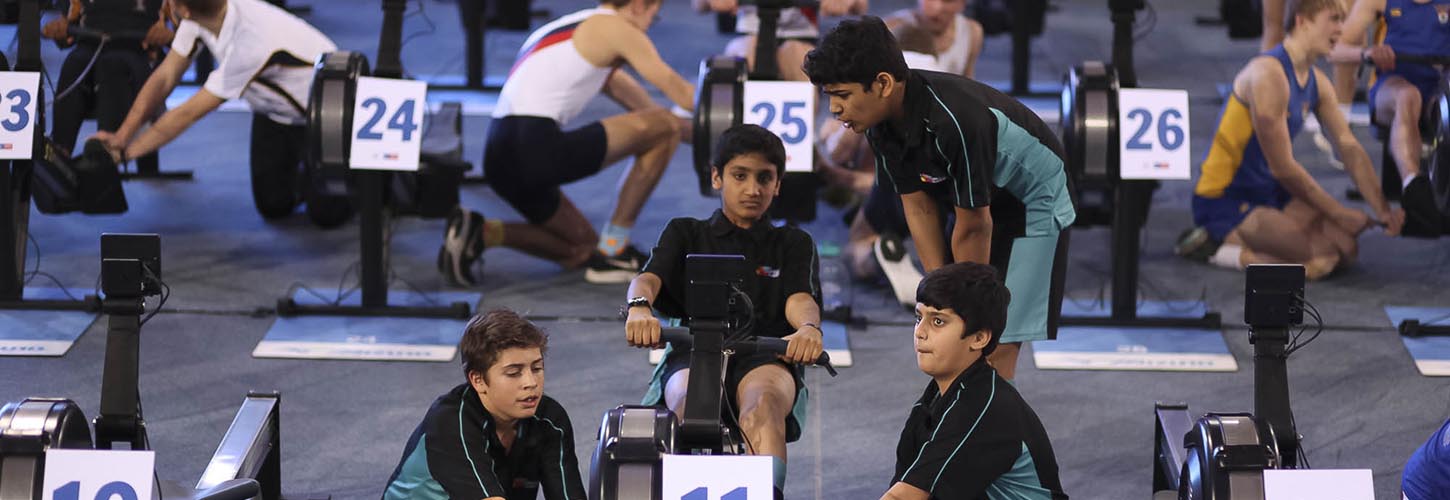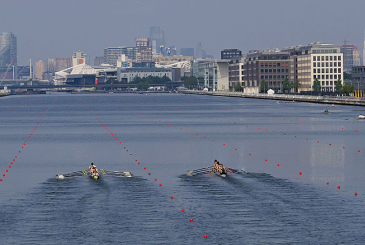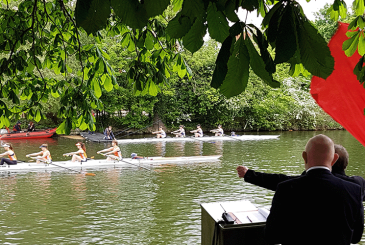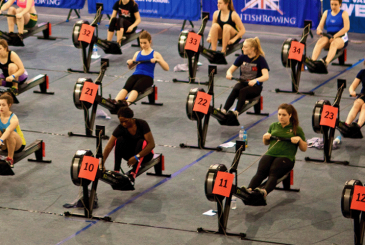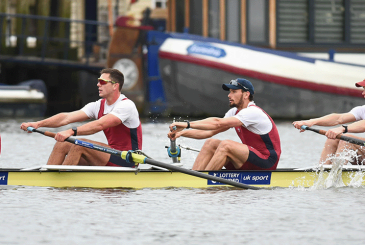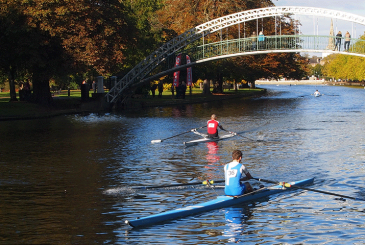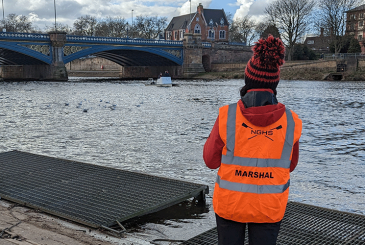Can the allure of an indoor rowing competition boost your winter training? Ed Evans caught up with previous British Rowing Indoor Championships competitors to find out.
Indoor rowing, especially through the winter, can be a grind for rowers who prefer rowing on water. Lacking the excitement of racing in heads or regattas, this element of the winter training block can be one of the most arduous parts of an athlete’s year, but with the right motivation, it can also be one of the most beneficial.
For years, the British Rowing Indoor Championships (BRIC) has stood as the definitive indoor rowing competition for rowers of all ages in the UK. The competition offers a range of events, from the classic roster of 2K and 5K tests to more unusual relay and sprint events. Combined, they provide a comprehensive spectrum of racing opportunities for athletes looking to test their mettle on a national stage.
For a deeper dive into how BRIC supports their season, we spoke to junior rowers from across the country to better understand their motivations and experiences.
Why BRIC?
“It’s always been something to aim for as we head towards Christmas,” says Krish, whose first taste of rowing was on a rowing machine as part of a local outreach project in Cambridge. “BRIC was the first real competition I took part in, and it made me feel far more at ease about competing in general – the atmosphere was very friendly, but still with plenty of competitiveness.”
Many of those that have raced at BRIC look back on the event with fond memories; one coach I spoke to on the towpath told me that “BRIC has become a staple of our calendar; it helps the athletes that choose to take part in it keep up the training motivation as the days get shorter.”
As the largest gathering of indoor rowers in the UK, BRIC holds an important place not only in the calendars’ of ‘traditional’ on-water rowers but also in CrossFit and other indoor rowing communities from all over the UK – and sometimes even further afield.
Forging a new team
Rowing is always a team sport: in a crew boat, the bond between members is evident, yet even in a single, a team of coaches, friends and athletes are behind every medal. And so it is with BRIC; while most competitors opt for an individual race, BRIC also provides an opportunity for groups to compete as a team in a relay race.
“The relay format was something totally new to us when we started training for BRIC,” Krish continues, “but I soon found that I was making new friends within the squad as we trained for the relay.”
The relay offered at BRIC runs over eight minutes for juniors and adaptive rowers and 4k for adults. It gives a variety of team types the ability to race in combinations they usually wouldn’t, working together to accrue the best splits and decipher the best change-over tactics to minimise time and distance lost during athlete swaps.
For Rachel, a school coach, the relay format gives all of her athletes an achievable goal. “Not all of them are capable of doing well in the individual competition, but we don’t have enough staff to take some of the girls to BRIC and leave others behind,” she explains. “By entering the team relay, they’re all involved and even have a chance of winning if they work well together.”
Making a success of BRIC
Although now well-established, BRIC is still a unique competition for many rowers. As a result, it requires different preparation from what you’d do before a head race or regatta. Here are some top top tips for BRIC success from previous competitors, whether you’re rowing as an individual or in a team:
Timings are critical
“Work backwards from the time of your race to work our when you need to wake up, eat breakfast and start your warm-up.”
Athletes generally understand their bodies better than anyone else, so look at what works best for you. For example, when do you eat to give yourself the right balance of energy at the right time? When do you warm up, and when do you stretch?
To help you decide what to eat, check out these tips for BRIC race day nutrition.
Do a practice run
“Use one of your training sessions to simulate your race. Go through your race-day timings and treat the process like the real thing.”
One of the best things we can do to perform well on the day is to feel prepared – so do just that! Use one of your sessions to do a ‘dummy run’ and run through your race-day sequence as it will unfold on the day.
Have a race plan
“Break the race down into manageable chunks and aim for a realistic split in each section. Avoid the temptation to fly off the start.”
Most athletes choose to negatively split their race, aiming for successively faster and faster splits, meaning they finish at their fastest pace. Try out different tactics and find out what works best for you.
Make a playlist
“Pick a rhythm-focused anthem to start, and something that builds to a crescendo as you come towards the end of the race.”
Music can’t win your race, but it can make it far more enjoyable. So pick out the songs you enjoy and tailor playlists to the projected length of your race.
You can find more advice here on preparing for indoor rowing competitions and discover what race day’s really like.
On the horizon…
With BRIC just around the corner, now is the time start pulling your relay team together and perfecting your playlist ahead of the big day. The 2022 event will take place at the Lee Valley VeloPark (the site of the London 2012 track cycling events) and can be entered via the British Rowing website.
We’ll see you there!
Photo credit: Nick Middleton
What do YOU want to read about on British Rowing Plus?
What do you find interesting here on British Rowing Plus that you’d like more of? What haven’t we covered yet that you’d like to read about?
Let us know by emailing [email protected]


